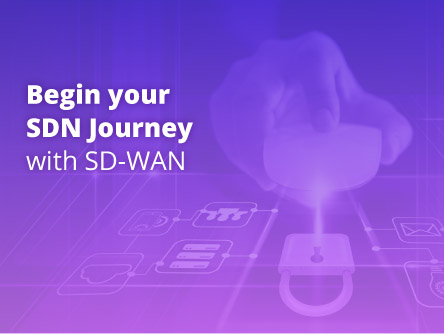In 2011, Marc Andreessen famously said that software is eating the world. He was referring to the rise of software taking over traditional businesses as well as eating up the value chain of industries. Since then, we have seen the rise of Software-Defined Everything (SDx) from Software-Defined Data Centre (SDDC) to Software-Defined Storage (SDS).
For the networking industry, Software-Defined Networking (SDN) and Software-Defined Wide Area Network (SD-WAN) are the hottest buzzwords in recent years.
SDN or SD-WAN?
SDN has transformed the traditional telecom infrastructure, enabling carriers and service providers to deliver their services on-demand, while reducing high operational costs and improving network performance and scalability.
On the other hand, SD-WAN is a cost-effective alternative to the traditional networking technology, such as Multiprotocol Label Switching (MPLS), for scalable and secure enterprise networking.
Both SDN and SD-WAN seemed closely related and serve a similar purpose, which makes it difficult for enterprise technology buyers to comprehend. Some of the most common questions we get from our customers are:
- Why should I use SDN to manage my network infrastructure?
- Is SD-WAN programmable?
- Are they the same technology?
- Do I need both SDN and SD-WAN?
- Which one is more beneficial for my business?
Identical Twins in the Family
Both SDN and SD-WAN are based on the same methodology of separating the control plane from the data plane to make networking more intelligent. Like identical twins, they might look and sound the same, but they are quite different from one another. The major difference between SDN and SD-WAN is what they are used for.
| Software Defined Networking (SDN) | Software Defined WAN (SD-WAN) |
|---|---|
| Manages a LAN or a service provider’s core network | Enables connections between networks and users across geographies |
| Programmable by the user to deliver bandwidth on-demand | Programmable to deliver operational simplification, integrated security and traffic prioritization |
| Similarities of separating the control and data plane | Similarities of separating the control and data plane |
| Offers visibility into the core network performance and real-time analytics | Offers visibility into the WAN environment and real-time analytics |
| Provides a centralised view for automation of network services | Focuses on software-defined application routing capabilities |
Harnessing the Best of Both Worlds
For large enterprises with increasingly distributed and complex IT infrastructure, the challenge is in managing the network with full visibility, while having the scalability to grow and meet new business objectives.
With the adoption of Cloud-based applications and services, enterprises are moving more of their IT capital expenditure (CAPEX) into operating expenditure (OPEX). As they continue to expand, MPLS is simply too expensive to scale their WAN infrastructure and does not provide the flexibility to deploy services remotely.
The combined use of SDN and SD-WAN can support an enterprise’s Cloud-First strategy. Enterprises can leverage on an SDN platform for interconnecting global data centres and direct connection to the Cloud via a private carrier ethernet network fabric. Concurrently, reducing WAN complexity by using an SD-WAN overlay to simply extend the edge to multiple branch office locations and remote users in a secure and orchestrated manner.
Get in touch with us If you’d like to learn how SDN and SD-WAN can ramp up your enterprise IT infrastructure.







